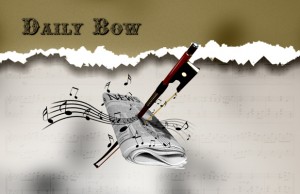 There’s a lot of talk lately about how pretty much everything is going downhill. It seems not to be limited to nationality (if you ask a citizen of any country what he thinks of the way it’s being run, chances are he’s convinced it’s in a downward spiral), occupation, political orientation, or gender. It seems to also be the case that people have always thought this–a generation ago, people complained just as much that things were really headed for the worst, just like they’re really (no, really) headed for the worst this time. Those of us with leveler heads realize that perhaps things are not all doom and gloom. For those that have yet to realize that, though, it can really seem like things are going to the dogs.
There’s a lot of talk lately about how pretty much everything is going downhill. It seems not to be limited to nationality (if you ask a citizen of any country what he thinks of the way it’s being run, chances are he’s convinced it’s in a downward spiral), occupation, political orientation, or gender. It seems to also be the case that people have always thought this–a generation ago, people complained just as much that things were really headed for the worst, just like they’re really (no, really) headed for the worst this time. Those of us with leveler heads realize that perhaps things are not all doom and gloom. For those that have yet to realize that, though, it can really seem like things are going to the dogs.
As far as classical music goes, that may not be a bad thing.
A recent article in Australia’s “Adelaide Now” has reported a somewhat unusual application of classical music. In Adelaide, Australia, an Animal Welfare League (AWL) shelter is seeking to utilize an intriguing, little-discussed benefit of classical music. In addition to all of the familiar effects of classical music exposure–many of which have been the topic of String Visions discussion–it seems that classical music has a soothing effect on animals. Scientific studies have indicated that classical music can do much to calm animals, and, in particular, it seems to alleviate separation anxiety.
In response to these findings, a volunteer at the AWL shelter in Adelaide has set up a music broadcast system at the shelter that provides the homeless dogs and cats who reside there with a steady stream of classical recordings. Shelter staff hope that the music will calm the animals waiting to be adopted, both for the sake of the animals and for the sake of the adoption rate at the shelter. According AWL animal care manager Leanne Page, “The dogs bark less and are more receptive to learning basic manners through the training we provide, making them more appealing to the public considering adopting from us.”
Animal adoption continues to be an important issue throughout the world, and, for those with pets, it can sometimes be a challenge to keep them calm. Why not try the AWL’s trick and see if the local classical station does the trick? For those of us who play instruments, though, it can be a mixed bag. While I was growing up, my family had two cats, Casper and Jesse. Casper liked to wind himself around my dad’s and my endpins while we practiced, and Jesse liked to curl up on a cushion on the couch across from either of us. My mom’s latest cat, though, doesn’t like to do much more than peek disdainfully around the door when I practice on visits home. That cat is ambivalent about the cello, hated the violin, and was oddly intrigued by the trumpet–and the hairdryer, but that is less relevant to the article. One of my sister’s cats (Bruno, a 17-pound Norwegian Forest Cat) seems to prefer the sounds of Portuguese fado music to the cello. It’s mostly sad songs about going to the sea, so maybe Bruno’s a little different. In high school, while rehearsing the Handel-Halvorsen Passacaglia for violin and cello, my violinist’s dog Maestro howled–howled–every time we hit a g minor chord. To this day, I still triple-check my g minor chords because of the dog’s reaction.
No matter what the reaction is, though, it’s clear that music and instruments have a definite effect on animal mood, and most animals are intrigued by the chance to get up close to playing at home. It looks like everybody’s a little happier with classical music around. That’s good news for those of us who have furry companions, and it’s great news for adoption shelters everywhere. Looks like things aren’t so bad after all.














No comments yet.